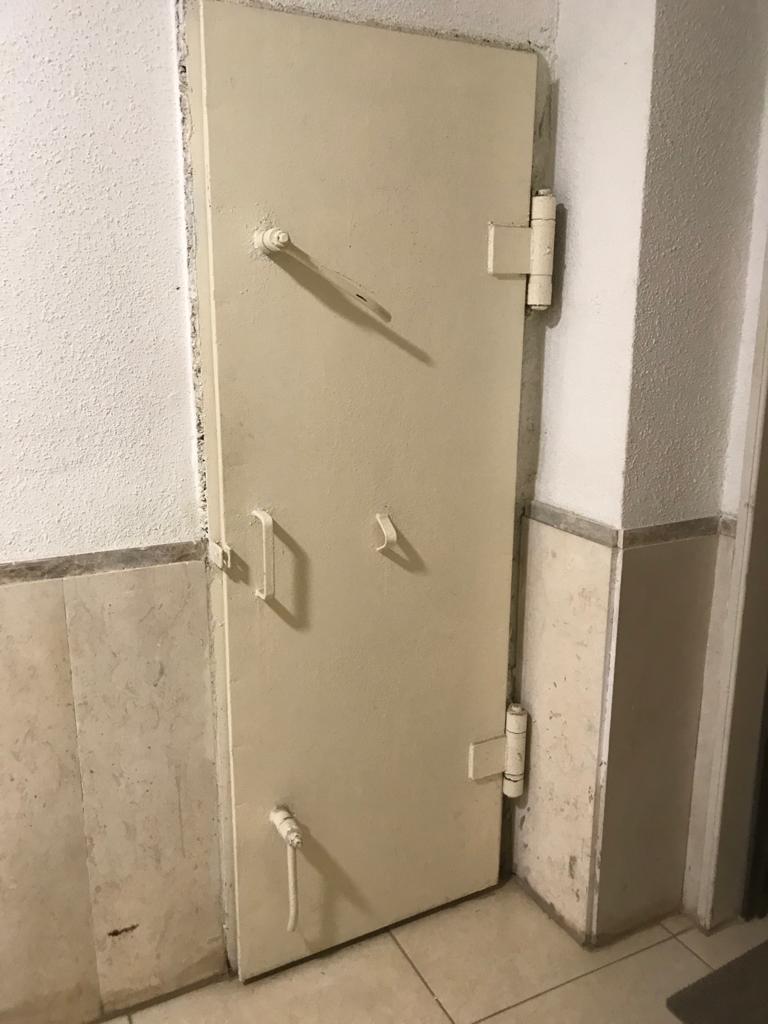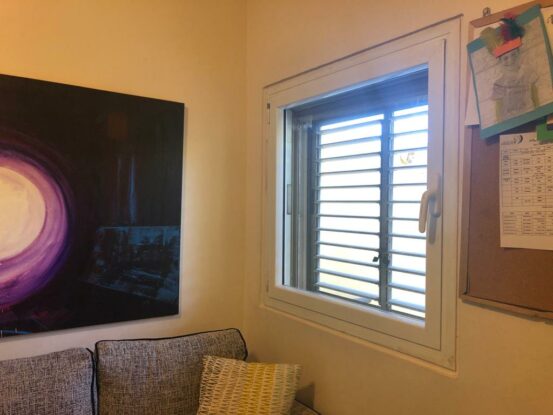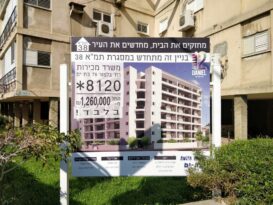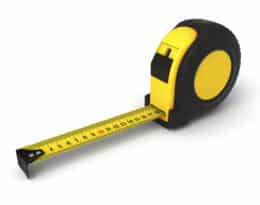One of Israel’s greatest protective measures from incoming missile attacks is known as the mamad (an acronym for merchav mugan dirati) – referring to a room in an apartment built of reinforced concrete. Despite the fact that it has been thirty years since the government required the construction of such a space in every new apartment and that the cost of building one in an existing apartment is not particularly high, about 60% of apartments in Israel remain unprotected due to a series of barriers.
The troubling events of the last week have been a painful reminder to all of us that along with the many benefits of living in Israel, there is also a constant security threat, which at any given moment may escalate into a full-scale war. These confrontations are not a case of one army against another, but rather the IDF against several terrorist organizations in the Gaza Strip or Hezbollah in Lebanon. And over the last two decades, it is Israel’s civilian population that has borne the brunt of incoming rocket attacks. In this article, we take a look at the role of the mamad and the technical specifications for the construction of the room.
In the last fifteen years, most of the missiles and rockets have been aimed at cities and towns in southern Israel, including Sderot, Ashkelon, Netivot, and dozens of moshavim and kibbutzim located near Israel’s border with the Gaza Strip. Unfortunately, since the current wave of the conflict began on Jerusalem Day on May 10, most of the regions of the country have made it onto the “missile map” – from the Eilat region in the Arava to the Jezreel Valley in the north, with hundreds of rockets fired at the central city of Tel Aviv.
Safe rooms increase both the security and value of an apartment
The mamad is a room whose walls are constructed from reinforced concrete, the door is made of steel, and the windows are made of impact-resistant glass. Since 1993, contractors have been obligated by law to include a safe room in every new apartment that is built. The addition of a safe room is also one of the main motivations for tenants in old buildings to carry out urban renewal procedures – such as TAMA 38 or pinui-binui (evacuation-construction). When it comes to complete demolition and reconstruction projects, the safe room is built as part of the new apartment, and in reinforcement projects, it is usually added to the existing apartment, but not in all cases.
During times when missiles are being fired at the civilian population in Israel, safe rooms are obviously a huge benefit to apartment owners and renters alike. While those without safe rooms are forced to go out to the stairwell or down to a communal bomb shelter when they hear a siren alerting them to an incoming rocket, those with private safe rooms in their apartments can deal with this situation in a far more convenient manner – all things considered. Parents of young children can simply put their children to sleep in the safe room so that they do not need to wake them up in the middle of the night in the event of a siren.
Most apartments do not have safe rooms because of policy failures
Despite the obvious benefits, most apartments in Israel do not have safe rooms today – almost thirty years after the enactment of a law requiring a safe room in every new apartment and fifteen years after the enactment of a law to reinforce old apartments through TAMA 38 projects. According to the numbers published this week in the Israeli press, out of more than two million apartments throughout the country, only about 800,000 have a safe room.
The relatively small number of safe rooms is largely the result of poor policy. First of all, while the construction of safe rooms has been required in all new buildings since 1993, only buildings constructed before 1980 are eligible for TAMA 38 renewal projects. That means that those living in buildings built between 1980 and 1992 can only get a safe room if they decide to build it themselves.
Additionally, TAMA 38 projects are generally carried out in central Israel for economic reasons, because this is where they are more profitable for developers. However, the peripheral regions closer to the Gaza Strip in the south and the Lebanese border in the north have a far greater need for increased protection from rocket attacks.
Technical specifications for building the mamad

The technical specifications for the construction of the security room are determined by the Home Front Command (the IDF unit responsible for civil defense). According to this unit, the area of the security room must stand on at least 9 square meters of floor (without walls), the ceiling height should be at least 2.5 meters, and the width of the room at least 1.6 meters. The wall should be built in one piece, without columns or beams. The reinforced concrete must be at least 25 cm thick in the outer walls, and at least 20 cm in the inner walls.
The security room must include a door and window that are shock- and shrapnel-resistant. The window must be at least 1.5 meters above the floor. It is forbidden to install bars in the security window, as the window is supposed to serve as an escape route from the room. Also, there must be communication and electricity points in the room, in case of a long-stay or emergency.
Building a mamad independently is costly and frustrating
While it is possible to build a safe room in an apartment independently – that is, not as part of a large renovation project taking place in the whole building – the process is complicated. Firstly, it costs approximately NIS 150,000 to add a safe room to an apartment, a sum that not everyone can afford to spend on a project of this type. That being said, building a safe room essentially adds another room, which, in the vast majority of cases, increases the value of the apartment by more than NIS 150,000. By adding a safe room, apartment owners increase both the security and value of their property simultaneously.

However, building a safe room independently is a frustrating process full of bureaucratic obstacles. In the first step, the apartment owner must apply for and obtain a building permit. In the case of a multi-story building, the occupant must also get approval from 66% of the neighbors in the building, because the safe room is usually added at the expense of communal space, such as a courtyard.
Even if the other tenants give their consent, there is still no guarantee that the planning committee will approve the construction. In cases where the mamad deviates from the construction line – the area designated for the construction of a structure – most committees will not approve the project, requiring the apartment owner to present a new plan that enlarges the area allowed for construction. Anyone who successfully makes it past these two barriers can call a construction company to begin the project. Today in Israel, there are many companies that specialize in building safe rooms.
Those who cannot add another room in their apartment for one reason or another can reinforce an existing room, usually by thickening the walls with steel plates. Although these reinforced rooms do not offer the same degree of protection as a safe room, it is obviously much better than not having any protected space at all. Even in this case, apartment owners should contact a company that specializes in the field.
Hopefully, following the recent criticisms in the press, once the current crisis calms down, the State will make an active effort to increase the construction of mamad rooms by increasing funding, easing up regulations and bureaucracy, and more. However, past experience shows that despite the importance of the subject and the degree to which it is discussed during and immediately following times of heightened tension, as soon as things calm down, life returns to normal and everyone forgets about it – until the next time.





